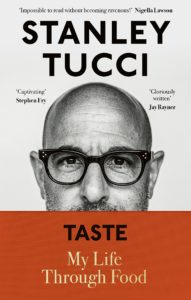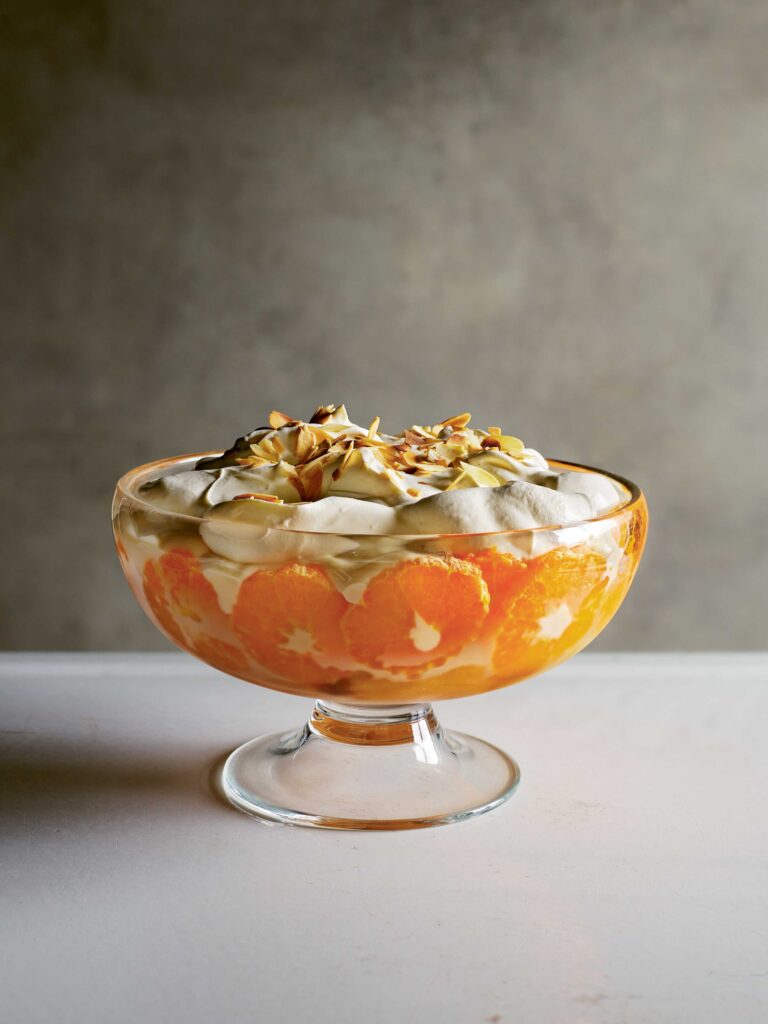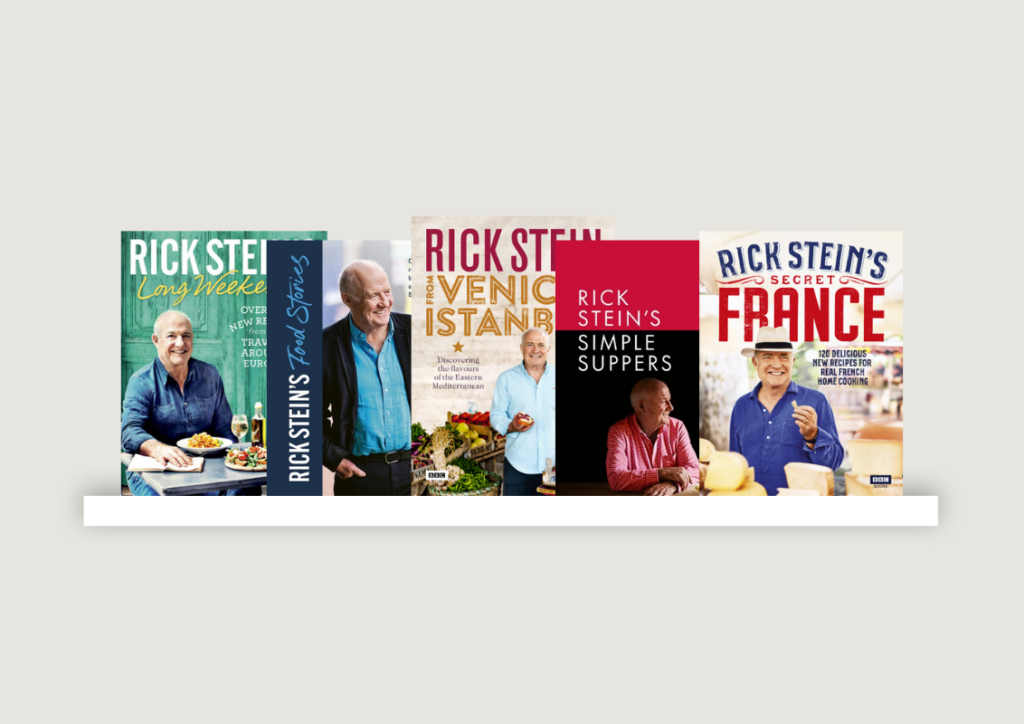Like many suburban saplings raised in 1960s America, I would bring lunch to school every day. It was a rare occasion that I would buy a lunch the cafeteria provided. This was for two reasons. One, it was cost-prohibitive for my parents to do so, and two, the food the cafeteria served was dreadful. Anyone growing up at this time anywhere in America knows what I mean, and therefore I need not elaborate. (I will confess, however, to a penchant for the excessively glutinous white rice, served by way of an old-fashioned ice cream scooper and deposited as a near-perfect sphere in a tiny pastel melamine bowl.)
Now, there were those students who bought lunch either regularly or on occasion. I, however, was only given money (five to ten cents) solely for the purchase of a half pint of milk. (My lactose intolerance was, as yet, undiscovered.)
Though many of my friends brought their lunches, the contents of my lunch box differed significantly from those of my peers. A prime example of my portable childhood lunch, lovingly packed into a pop image-themed metal container (a.k.a. a Partridge Family or Batman lunch box), would be something akin to the following:
A scrambled egg, fried potato, and sautéed sweet green pepper sandwich on two slices of Italian bread or in a “wedge” or a “hero,” which is a long loaf of Italian bread sliced horizontally and filled with whatever you choose to fill it with. In Philadelphia they are called “hoagies.”
One piece of fruit. (Apple, pear, or orange.)
One highly processed, prepackaged, store-bought dessert. (Twinkie, Devil Dog, Ring Ding, or Ho Ho. The names of which in retrospect seem as inappropriate as their ingredients.)
The fruit and the dessert were standard fare, but it was the sandwiches that were the marvel, and oftentimes made me the envy of my friends.
My dear friend Ricky S—— and I would trade sandwiches every now and again. The reason for this was that he was given a Marshmallow Fluff sandwich on white bread every day of grade school. (Today this would be considered a form of child abuse.) However, in those days no one cared—least of all me, who was more than happy to relinquish my gourmet fare for the unhealthiest schmear between two slices of bread known to man. I am sure he was equally happy to ingest something from which he could derive midday nourishment for once in his very white life. It is important to note that for the most part my exotic and coveted lunches were directly related to the previous night’s dinner. A typical week of said lunches might have looked something like this:
Monday: Meatball wedge. As we had meatballs in a slow-cooked, homemade, ragù with pasta for Sunday dinner, this lunch was a natural choice.
Tuesday: Chicken cutlets on Italian bread or a wedge with the smallest amount of butter or mayo and lettuce.
Wednesday: Eggplant parmigiana wedge. The eggplant parmigiana was not breaded. It was made in light tomato sauce, had very little cheese, and incorporated thinly sliced potatoes.
Thursday: Veal cutlet sandwich or wedge with a small amount of butter and lettuce. This was in the days of affordable veal.
Friday: Scrambled egg, pepper, and potato wedge. As the food budget was wearing thin by the end of the week, this was an inexpensive lunch my mother might whip up on Thursday night after a simple dinner of pasta and salad.
Lunches on the weekends were catch as catch can. Whether friends were at my house or vice versa, we would raid the fridge and make stacks of peanut butter and jelly sandwiches. As we got older, we would make sandwiches of every ilk: tuna salad, bologna and mustard, ham and cheese, liverwurst and red onion, turkey breast and mayo, American cheese and mayo, all on whatever bread was available (sliced white, Italian, bagels, kaiser rolls, etc.). We ravaged jars of dill pickles and sweet gherkins, bags of Ruffles potato chips and Fritos. We washed it all down with gallons of milk, orange juice, apple juice, or lemonade (did any of us ever drink water?). For dessert we emptied the freezers of ice pops of every unnatural colour and flavouring. During school breaks we did the same, but in winter we added hot chocolate (Swiss Miss, with little marshmallows, from individual packets) to our gluttonous midday rampages.
During summer vacations we followed the same routine like crazed ants at an endless picnic. I don’t remember anyone in our neighbourhood ever going on an extended summer vacation, so we all just hung around together for those two humid months, going from one dwelling to another, eating our own and each other’s parents out of house and home. I found summer vacations so joyful. The days were long, allowing us to play outside until nine p.m., at which point we would have already negotiated a sleepover at one or another of our homes so that we might never be parted even in slumber. Summertime also brought my favourite holiday, besides Christmas: Independence Day, also known as the Fourth of July.
When I was a boy, Fourth of July celebrations were very important in our family. At this time all or most of my family members who had been part of the great wave of Italian immigrants were still alive. Compared to the abject poverty of the Italian south, America held for them everything Italy could not offer or would not allow. It was in America that their dreams of a new and successful life came true. They created Italian enclaves all over the country by sending for family and friends once work had been secured. America gave them the best of both worlds: a country where prospects were many, and the opportunity to surround themselves with extended family. In this new world, they would birth new generations who had options available to them never thought possible in the poor and corrupt towns of Southern Italy. In America they worked together, grew together, and sometimes grew apart together.
Food was the connective tissue that brought them, again and again, back into each other’s homes, backyards, front porches, campsites, beaches, and hearts. The lubricant that is wine ameliorated any squeaky emotional wheels, just as at times it was fuel for any dark and dormant emotional fires.
I remember many of these Independence Day celebrations being held at our house in northern Westchester. We would spend days preparing for the onslaught of relatives from both sides. Out of paper, string, and poster board, my father would make all of the decorations, from hand-painted pennants to red, white, and blue stovepipe hats. With the welding equipment he used to make steel sculpture, he would cut fifty-gallon drums in half lengthwise and place them on sawhorses. They were then filled with charcoal and old steel fridge/ freezer shelves were placed across the top, thus creating two enormous barbecues. Over these makeshift grills, the ubiquitous hamburgers and hot dogs were cooked alongside Italian sausages, a simple culinary representation of the melding of two distinctive cultures. The sausages were served on long wedges with slowly sautéed onions and red and green peppers. Jug wine was served, as well as glasses of beer straight from a frigid keg. In those days the ice came in blocks, not in bags of cubes, and as a young boy I relished the task of breaking it into smaller chunks with a deadly ice pick so that they would fit around the portly beer keg that sat in a basin wrapped in thick canvas, waiting to be tapped. For dessert, besides peaches soaked in wine, my mother always served a homemade rectangular sponge cake decorated with the Stars and Stripes. The surface was covered in white icing, with fresh strawberries comprising the red stripes and blueberries making up the blue field behind the stars.
Music followed dinner as surely as games of horseshoes and bocce preceded it. Uncles on mandolin or piano sang old Italian folk songs or Italian versions of bygone American ditties, like “Darktown Strutters’ Ball.” These, along with a few American classics like “Yankee Doodle” and “You’re a Grand Old Flag,” created the perfect accompaniment to three generations bound by Italian traditions who’d come together to celebrate the quintessential American holiday. As more and more of the first-generation immigrants passed away, the Fourth of July seemed to become less and less important. We still celebrated it, but certainly not in the numbers or with the same passion we once had. As my generation reached early adulthood, we began to form our own political opinions, which were usually not in keeping with those of many of the older generations, who were rather conservative and still believed that America was the greatest country in the world no matter what. After the horror of the 9/11 attack, these political differences were exacerbated. For me and some of the more liberal family members, patriotism seemed to have been monopolized by those with hawkish views of how to right that terrible wrong and who waved the American flag more like a weapon than a symbol of freedom, acceptance, and possibility. We were becoming once again a country where immigrants were vilified and disagreeing with the government’s wars in the Middle East was practically tantamount to treason. Ultraconservatives even started calling French fries “Freedom Fries” as well as boycotting and even smashing bottles of French wine because the French refused to send troops to fight alongside the United States in Iraq. I wish they had just sent them to me. Not the troops, the wine. I am hoping now, as I write this, that those days will soon be behind us.
Now that I spend most of my time in London, I must admit celebrating American Independence Day is a tad uncomfortable for one fairly obvious reason: the colonists won and the British lost. (I know the war was a long time ago, but I never quite know how to celebrate that victorious day here without feeling like I’m rubbing it in some Brit’s face—like my in-laws.) However, during the Obama administration, my family and I were fortunate enough to be invited to two July Fourth fêtes at Winfield House in Regent’s Park, the home of the American ambassador. These were lovely, casually posh daytime affairs for expats (a nice word for immigrants) and their families, complete with American military bands, jazz singers, and all the traditional American foods one could eat. How ironic that in England, of all places, on these two occasions I would be reminded of all the positive aspects of this important American day. Taking part in joyous celebrations of American democracy on foreign soil made me long for a time in my youth when the sausage and peppers of Italian immigrants sat peacefully on the grill alongside their American cousins, the hot dog and the hamburger.
My maternal grandmother, Concetta, was an extraordinary cook. Her parents emigrated from Calabria when she was three years of age to Verplanck, New York, a small town about forty miles north of Manhattan. She was taught to cook by her mother and, as far as I am concerned, perfected every recipe. Like my mother, she was someone who could well have been a very successful professional chef had she so chosen or had she been given the choice. It was very rare not to see her in the kitchen preparing some dish or another. If she was not in her kitchen, she was in the basement, which was home to an auxiliary kitchen where she often did “prep work.” It was down there, on an old yellow and green enamel-topped table, that she would make her light-as-a-feather, soft-as-a-baby’s-bottom pizza dough. On the gas stove (perilously unventilated), she would prepare sauce or boil pasta for large gatherings that were held there if the main kitchen was unable to accommodate the ever-growing extended family.
That basement to me was a wonderful kind of time capsule and sanctuary. Divided by a staircase that led to an upstairs hallway, it boasted the makeshift auxiliary kitchen on one side (complete with an old washing machine with hand-cranked rollers that was still very much in use) as well as my grandfather Vincenzo’s workshop on the opposite side. Along one wall sat a long workbench with ageing hand tools and dozens of glass jars filled with screws, nails, washers, nuts, and bolts hanging from their lids, which were nailed to the underside of a wooden shelf. A most sculptural presentation of a handyman’s bric-a-brac if ever there was one. In the far left corner of this space was a door to the room that I loved most: the wine cellar.
This was a low-ceilinged, cavelike room, approximately eight feet by ten feet, that one entered through a roughly made whitewashed door that was rotting from the bottom up due to the excessive dampness to which the floor and walls clung so dearly. Inside to the right were rough-hewn shelves on which rested the countless long-necked soda bottles that held the precious homemade tomato sauce of the last season. I will digress here to explain of what this vital red liquor was comprised and how it was made.
Tropiano Basic Tomato Sauce or Basic Bottled Tomato
— INGREDIENTS —
Bushels of tomatoes (you decide how many)
Salt
Fresh basil
— EQUIPMENT —
One outdoor open fireplace or fire pit, with heavy metal grates
Fire
Two large galvanized aluminium tubs
One white pillowcase
Lots of old long-necked glass soda bottles
One ladle
One funnel
Lots of new soda bottle caps
One bottle-capping device
One thick piece of oilcloth big enough to cover one of the tubs
Enough water to fill one of the tubs
• Make the fire.
• Fill one tub with water and place it on the grate over the fire.
• Take a lot of the tomatoes, shove them into the pillowcase, and squeeze the s#*! out of them over one of the tubs so that the juice of the tomatoes oozes through the weave of the pillowcase, making it look like a relic of the Saint Valentine’s Day Massacre. Continue until all the tomatoes are gone or until you feel like Macbeth at the end of his play.
• One by one, fill the bottles (with a ladle, via funnel) with the tomato juice and add a pinch of salt and a basil leaf to each.
• Cap the bottles.
• Put the bottles in the water that’s in the other tub.
• Cover them with the oilcloth.
• Boil them for a while. (I can’t remember what the health ruling is on this so/and/but I take no responsibility for any foodborne illnesses).
• Take out the bottles.
• Let them cool.
• Put them in my grandfather’s wine cellar, or store in a cool, dry place more convenient for you.
This sauce was used throughout the year. It was light and sweet and could be cooked with olive oil, sautéed garlic, and onion or doctored up any which way one chose. One or two long days of work for months of red gold. The bottles would be stored in the wine cellar on wooden shelves alongside mason jars containing pickled green tomatoes, or roasted peppers suspended in olive oil, flavoured with salt and a single clove of garlic. From the wooden beams, over these vacuum-sealed treasures, hung small homemade salami and waxy, pear-shaped bulbs of provolone cheese.
And so now we must return to the wine cellar. Yes, we must return to the must. For the must was all-consuming when one entered the wine cellar. Must and mildew, dank and deep, coated everything, including the aged wine press that stood so proudly in the corner. One was sure that new life forms were breeding from the spores that danced on every surface and consequently one’s nostrils and lungs after the first inhale. But the pride that my grandfather took in drawing out his vinified love from the fetid oak barrel into the abraded decanter and presenting it to my father or my uncles (and in later years me and my cousins) made up for any respiratory diseases we were sure to contract. It was an honour to be asked to participate in, or even bear witness to, the ritual in the wine cellar. In fact, I remember being furious when my sisters wanted to tag along, as I saw this as a distinctly male rite of passage. At any rate, those of us lucky enough to be present swelled with pride as the cloudy purple liquor was carried upstairs to the table in its decanter, poured into juice glasses, toasted with, and drunk heartily.
Was it the best wine in the world?
No.
Was it the worst?
Very close.
Did it matter?
No.
It was part of my grandfather, whom we adored, and that made it the sweetest liquid ever to pass our lips.
The house that holds that cellar, that kitchen, and those memories was sold long ago, but the flavours and aromas, both tart and sweet, musty and fresh, inhabit my nose, my mouth, and my heart to this day.





